

 |  |


Lying on the back,

APPROACH THE LEGS TO the pelvis, placing the feet on its width, put your hands on the sides of the head, maximally pushing the pelvis up, avoiding the compression effect in the lumbar region:
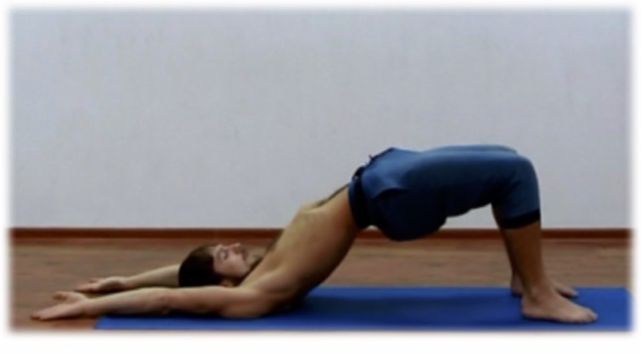
ONE VARIANT with standing on your toes:
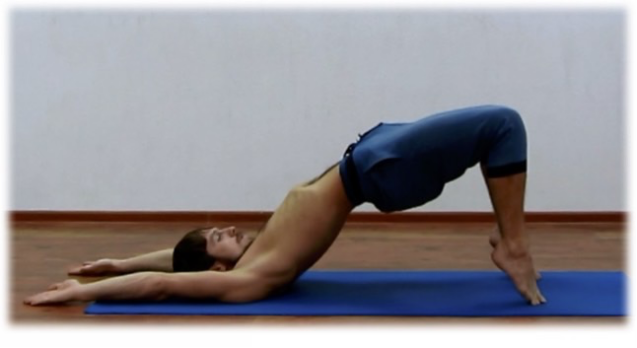
TWO VARIANT place your arms around the shins from the outer surfaces (in this position, your shoulder blades and shoulder joints should approach each other):

THREE VARIANT (DEEPER) with a large opening of the chest and grasping the shins with the hands from the inside. Here, your thumbs should look down:
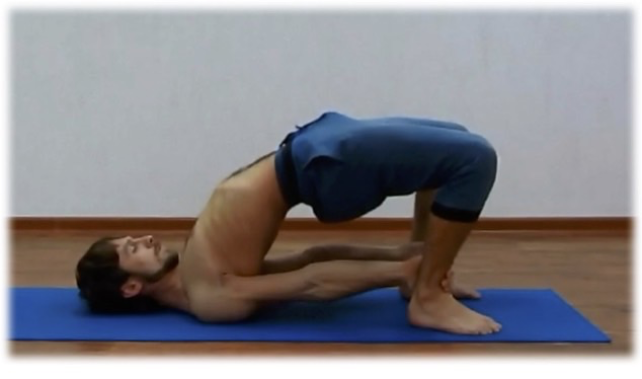
FOUR VARIANT of the Bridge pose with your legs put together:
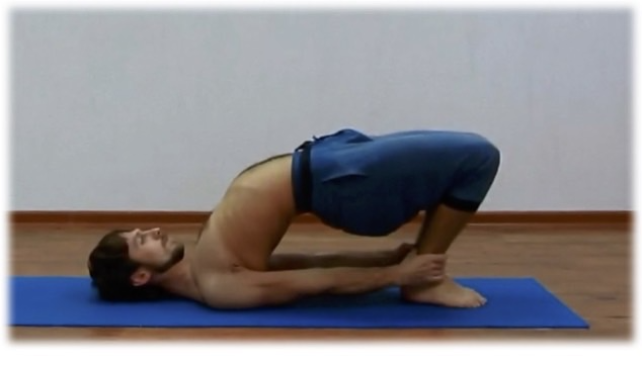
FIVE VARIANT of Setu Bandhasana is also known as the ‘Iron Bridge.’ In this position, try to bunch fists, lean on the back surface of the hands, fully straighten the legs, approach the shoulders and shoulder blades as close as possible to each other, push the pelvis out maximally and pull the toes over:
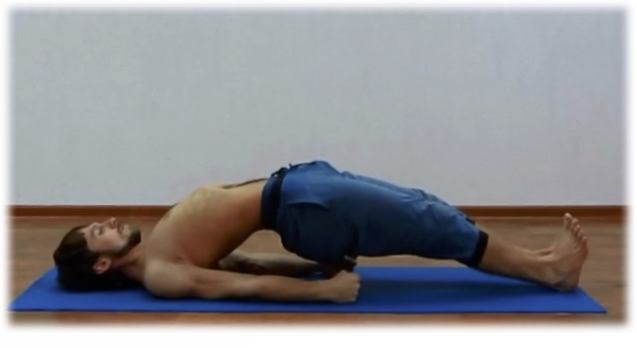
SIX VARIANT of Depada Pidam asana with lifting one leg:

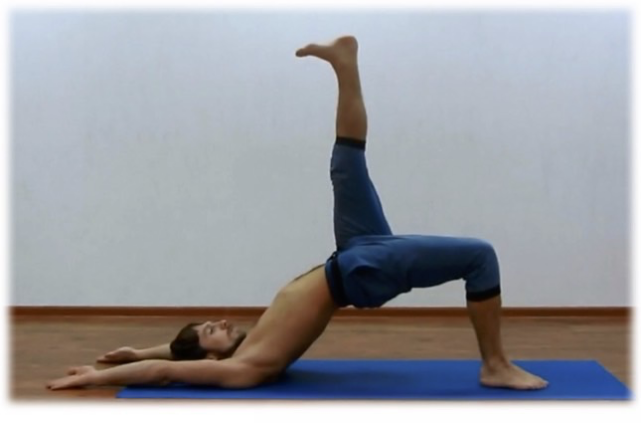
PAY YOUR ATTENTION: make sure that you completely relaxed the neck and placed your head in the center in the final position in any variant.
Attention: if you have severe problems in the lumbar and cervical spine, don’t study this technique alone. You should make an individual request to the competent instructor to clarify the possibility of performing the bridge pose.
Effect: The Bandhasana set has a goof effect on numerous organs and systems of the human body, so it is used in yoga therapy as an element of practice at angina, pneumonia, hypertension, gastritis, spleen and liver diseases, osteochondrosis, sinusitis, menstrual cycle disorders in women. The bridge pose also strengthens the leg, back, abdomen and neck muscles, positively influences the processes occurring in the pelvic organs, abdominal and thoracic cavities, and helps to get rid of a headache and excessive nervous strain.
We finish our set of asanas for beginners and relax in shava—mudra or in Savasana.